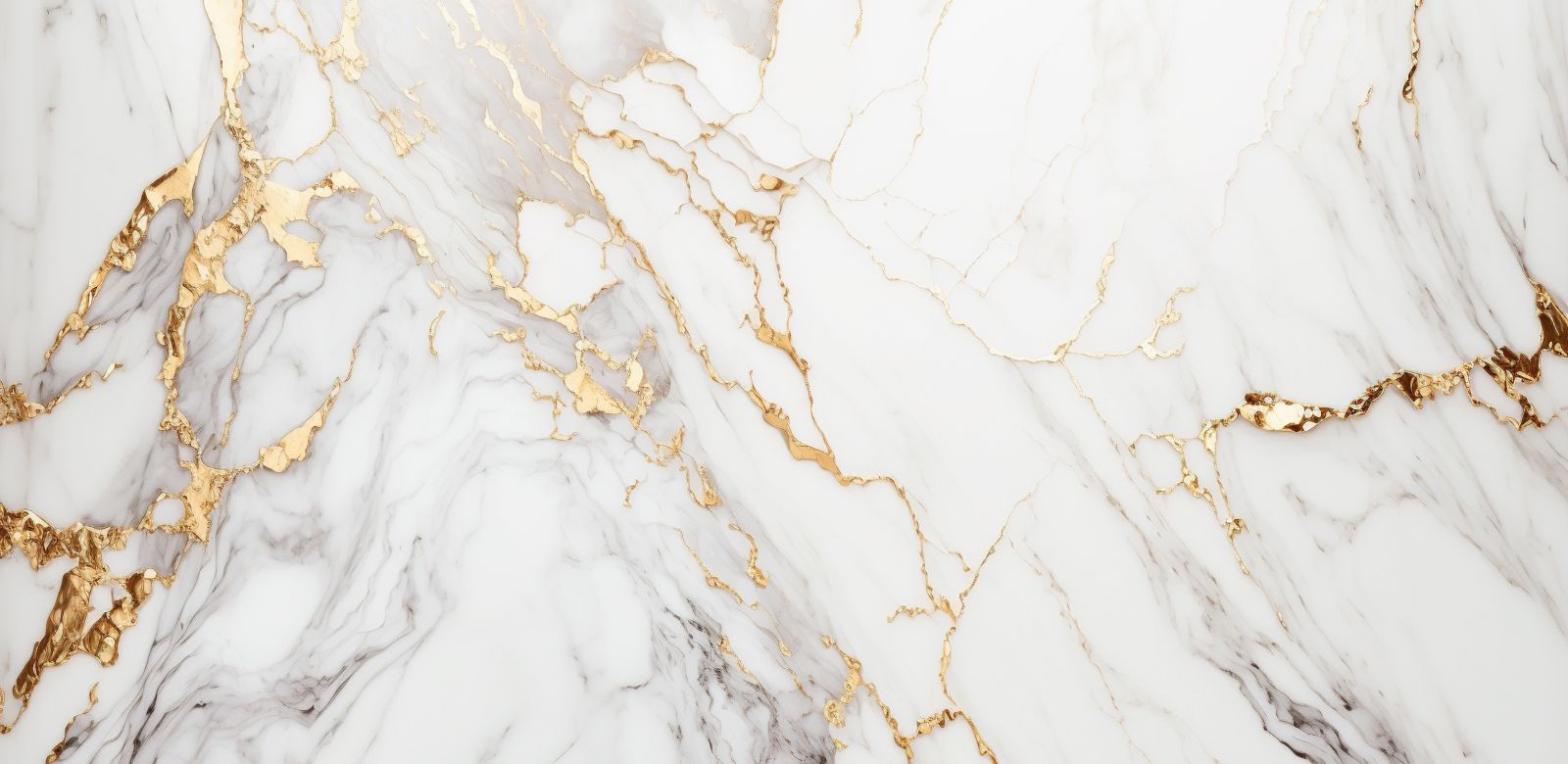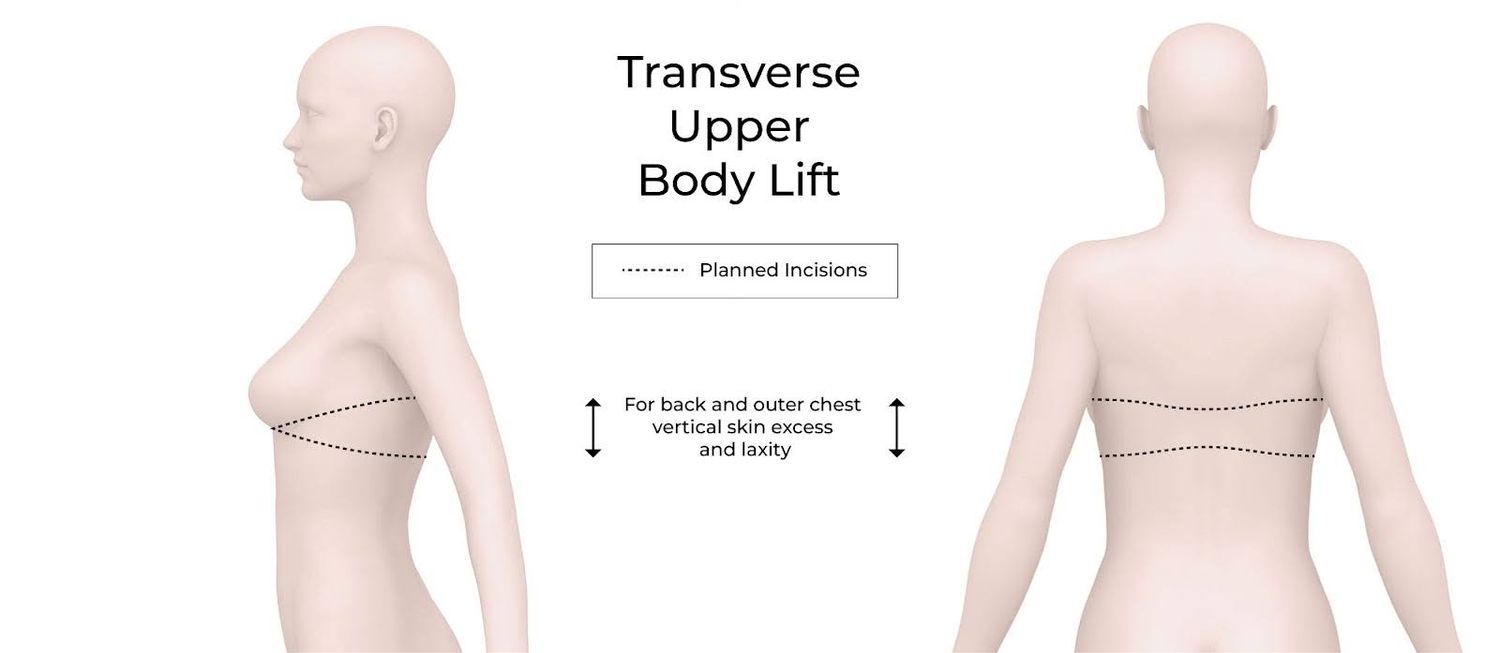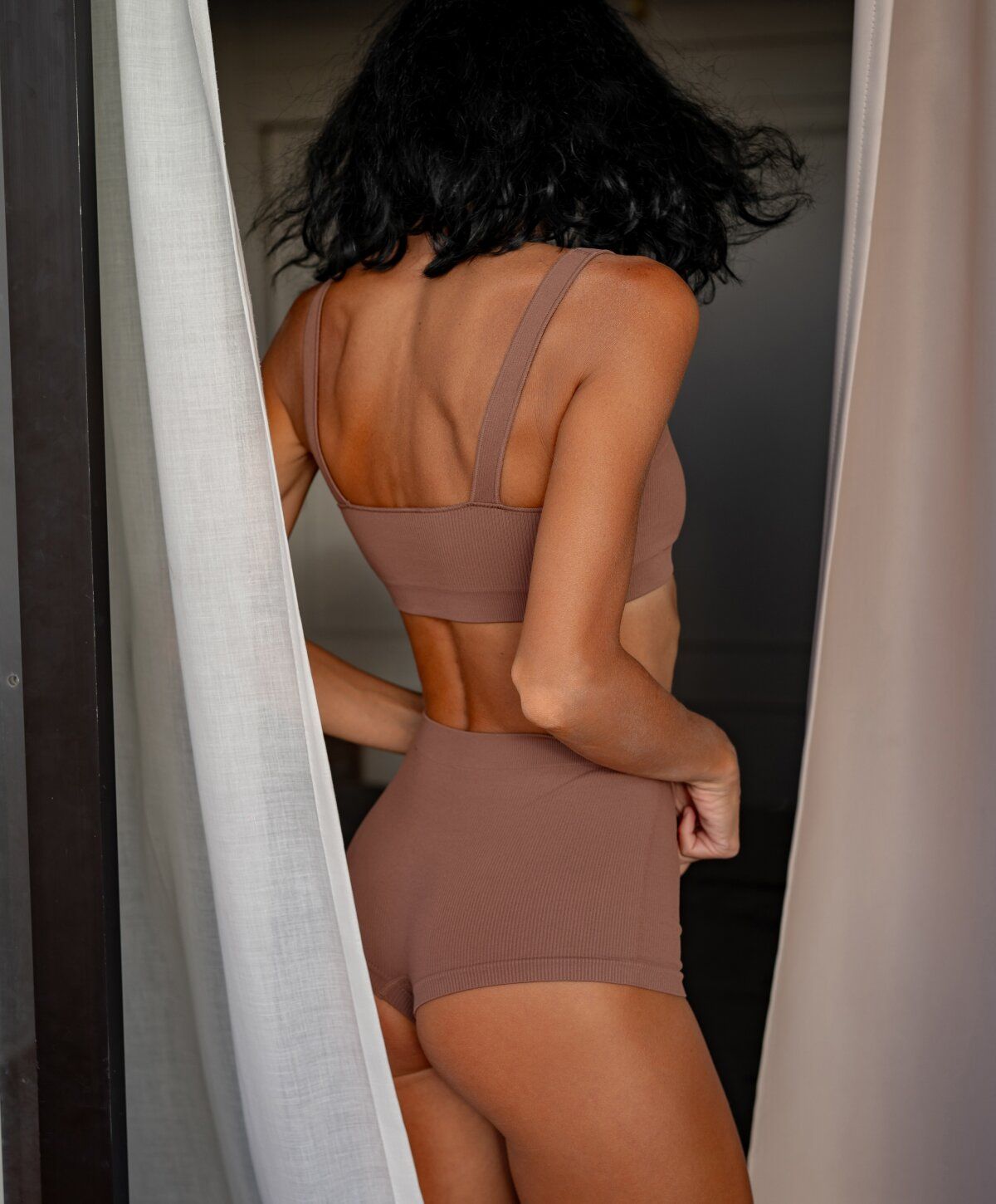



Gone are the days when the body lift was reserved for weight loss patients. In this time of inclusivity and modern aesthetic advancements, getting a body lift isn’t that complex anymore, especially when it’s done by a highly specialized plastic surgeon like Dr. Siamak Agha—one of the top plastic surgeons at The Aesthetic Centers.
In fact, more and more patients who did not undergo massive weight loss are now getting a body lift to rejuvenate and restore their body, as well as combat skin laxity and tissue sagging brought about by aging.
eUpper Body Lift at a Glance
1 of 1

The loss of skin elasticity isn’t exclusive to weight loss patients but is also common among the aging population or those who have had prior liposuction. The latter can also experience droopiness on their back, chest, and arms, thus needing upper body contouring. Get to know more about the advantages of an upper body lift for non-weight loss patients as you read the rest of this article.

But before we go to the surgery itself, let’s first explore the reason why most people get an upper body lift: the presence of saggy skin on the upper body. Your body naturally changes as you age. Starting at the age of 30, you begin losing lean tissue, leading to muscle loss or atrophy. The amount of fat in your body also steadily grows as you age. In fact, older people have almost one-third more fat compared to their younger years. But these fat deposits are primarily stored at the center of the body and around internal organs. The layer of fat right under the skin gets thinner, thus making your skin saggier.
It also doesn’t help that you experience elastin and collagen depletion as you age. These two proteins help maintain elasticity and firmness, so their production decline contributes to saggy skin and back rolls on your mid-back and lower back.
Skin laxity in your upper body may look like hanging tissue drapes extending from your ribcage in the front to the vertebral column at the back. The extra skin on your back can even form rolls: the upper armpit roll, breast roll, two mid-back rolls, and a lower hip roll. Your breasts can also sag as the ligaments making up your breast tissue stretch and lose elasticity. The combination of protein, muscle, tissue, water, and fat loss contributes to sagging skin on your upper body that only an upper body lift can solve.

Dr. Agha performs three different types of upper body lifts depending on your skin laxity issues and the presence of abdominal rolls.

The bra-line upper body lift corrects for vertical laxity of the upper to mid-back and outer chest, producing a tight and flat back contour.
In this technique, Dr. Agha creates two horizontal incisions on your back to remove a band of mid-back tissue from one outer chest to the other. With these incisions, he removes back skin and underlying fat without damaging your back muscles.
Once the excess tissue and skin are excised, Dr. Agha sutures the incisions. He uses three layers of suturing, with his final incision ending at bra level. This way, the scar can be covered by a bra.
Take note that the transverse upper body lift only improves back skin sagginess. It offers no chest correction.

If you have breast sagging and rolls in your lower chest and upper abdomen, that means you have chest laxity, and you would benefit from a reverse tummy tuck.
The reverse tummy tuck addresses upper abdominal skin laxity issues by removing excess skin and fat on your upper abdomen and lower chest. Your skin is then vertically pulled upwards towards the breasts.
It is often performed together with a breast lift to address breast sagging. Dr. Agha merges the bra-line upper body lift markings over the outer chest into the reverse tummy tuck and breast lift markings to ensure the best results. In that manner, the perfectly placed incisions run from the back to the front.
Through the incisions, a large section of the back rolls is removed and continued on the front as a reverse abdominoplasty.
Popularized by Drs. Agha and Hurwitz in 2007, the J-upper body lift corrects for circumferential or horizontal chest laxity.
It involves a vertical incision on the side of the chest, where excess chest side tissue is removed, and chest laxity is reduced. The incision starts at the armpit and ends at the mammary crease, shaped like the letter J—hence its name.
The two J-shaped incisions on your other chest remove a segment of outer chest skin and underlying fat without cutting into the underlying muscles. Once the excess skin and tissue are excised, the back tissue is advanced to the breast tail.
At this position, Dr. Agha anchors the back tissue using permanent sutures. This is an essential step as it prevents the J-upper body lift incision from widening. The incisions are brought together and closed with sutures.
By itself, the J-upper body lift is enough to correct mild back laxity. But for more severe cases, a bra-line upper body lift is the mainstay approach for correcting upper back laxity.

But what if you have a pronounced vertical and horizontal laxity of your chest and back? No need to worry because the bra-line and J-upper body lifts can be combined to tighten your upper chest, smoothen your back, and reduce your chest circumference. A reverse tummy tuck can even be added to excise the lower chest roll.
Upper body lift surgery offers tightening and contouring of the skin of the upper torso to combat laxity. The upper body lift targets excess skin and fat in areas such as the chest, back, and arms, resulting in a more sculpted and toned appearance. By removing loose skin and addressing sagging tissue, an upper body lift can restore a firmer and more youthful contour to the upper body. While most people think this surgery is solely for those who have lost weight due to massive weight loss, body lift surgery can work for anyone who suffers from the discomfort and aggravation that comes from loose skin along the upper body.
An Upper Body Lift Surgery can improve body proportions and enhance overall symmetry. Patients often experience increased self-confidence and satisfaction with their appearance following upper body lift surgery, allowing them to feel more comfortable and confident in their own skin.

You can eliminate your back rolls and sagging tissues on your outer chest with an upper body lift. It gives you a smoother back and a smaller chest appearance. But like all other body contouring procedures, the final results and full benefits of the upper body lift may take three or more months before you can fully appreciate them. Time is needed for swelling to subside.

Please read the General Instruction Sheet as well.
Recovery from upper body lift surgeries generally takes about three to four weeks.
General Instructions:
Recovery Timeline:
| Timeline | Activity |
|---|---|
| 24 hours | Have someone assist you because you’ll feel groggy due to anesthesia. Sleep flat on your front, sides or back. |
| Day 1 | Walk every 3 hours indoors to prevent deep venous clots in your calves. |
| Day 5 | Follow-up with Dr. Agha. Driving is not allowed due to impaired reflexes from pain medication. |
| 3 weeks | Swelling will start to lessen but will take 6-12 weeks to subside entirely. |
| 6 weeks | The abdominal binder or compression garment may be removed. You may start cardiovascular exercises such as stationary biking. |
| 12 weeks | You may start heavy lifting, contact sports, and jogging. Scars are firm and pink. Avoid irritation around the operative site. |
| 9 months | Scars flatten and lighten in color. |
Embarking on your journey towards a sculpted upper body begins with a confidential consultation at The Aesthetic Centers. Dr. Agha leads this personalized session, where he takes several crucial steps to ensure your goals are understood and achievable. First, he listens to your goals and pinpoints areas for improvement to determine if an upper body lift is the best option.
Following this, Dr. Agha conducts a comprehensive assessment of your upper body, meticulously evaluating your candidacy and determining the most suitable technique tailored to your unique anatomy. With these insights, he expertly crafts a personalized treatment plan outlining the procedures and expected outcomes.
Throughout the consultation, Dr. Agha encourages questions and provides thorough explanations about upper body lift surgery, recovery, and anticipated results to ensure you feel fully informed and confident at every stage of the process.
The upper body lift surgery typically targets areas such as the chest, back, arms, and armpits, addressing excess skin and fat to sculpt a more defined and toned appearance.
The duration of the operation depends on the upper body lift technique you’re getting. If you’re only getting a bra-line upper body lift or a J-upper body lift, the duration of the surgery is typically about two hours for each. Dr. Agha typically performs an arm lift, J-upper body lift, bra-line upper body lift, and breast reshaping in eight hours or so as an outpatient surgery.
Schedule Your Consultation
Get a private and personalized consultation at our beautiful practice in Newport Beach, CA.
3701 Birch St. #200, Newport Beach, CA 92660
By providing a telephone number and submitting the form you are consenting to be contacted by SMS text message. Message & data rates may apply. Reply STOP to opt out of further messaging.
If you would like to know more about how your data will be used, please review our Privacy Policy.